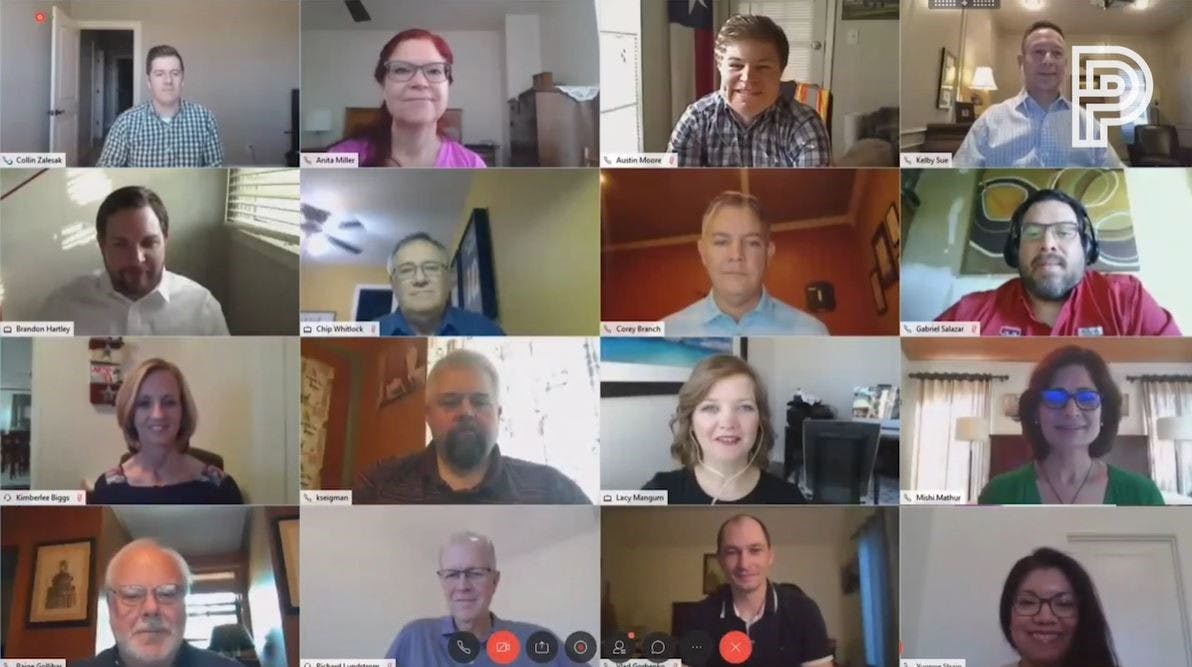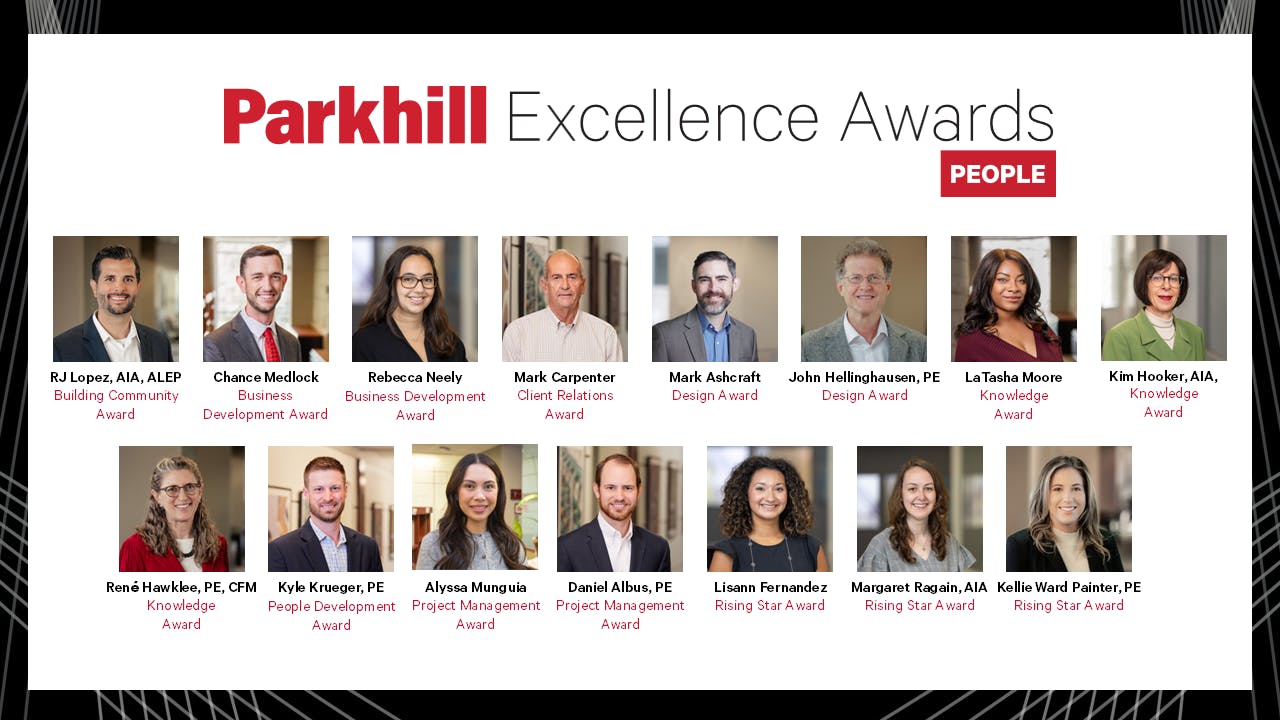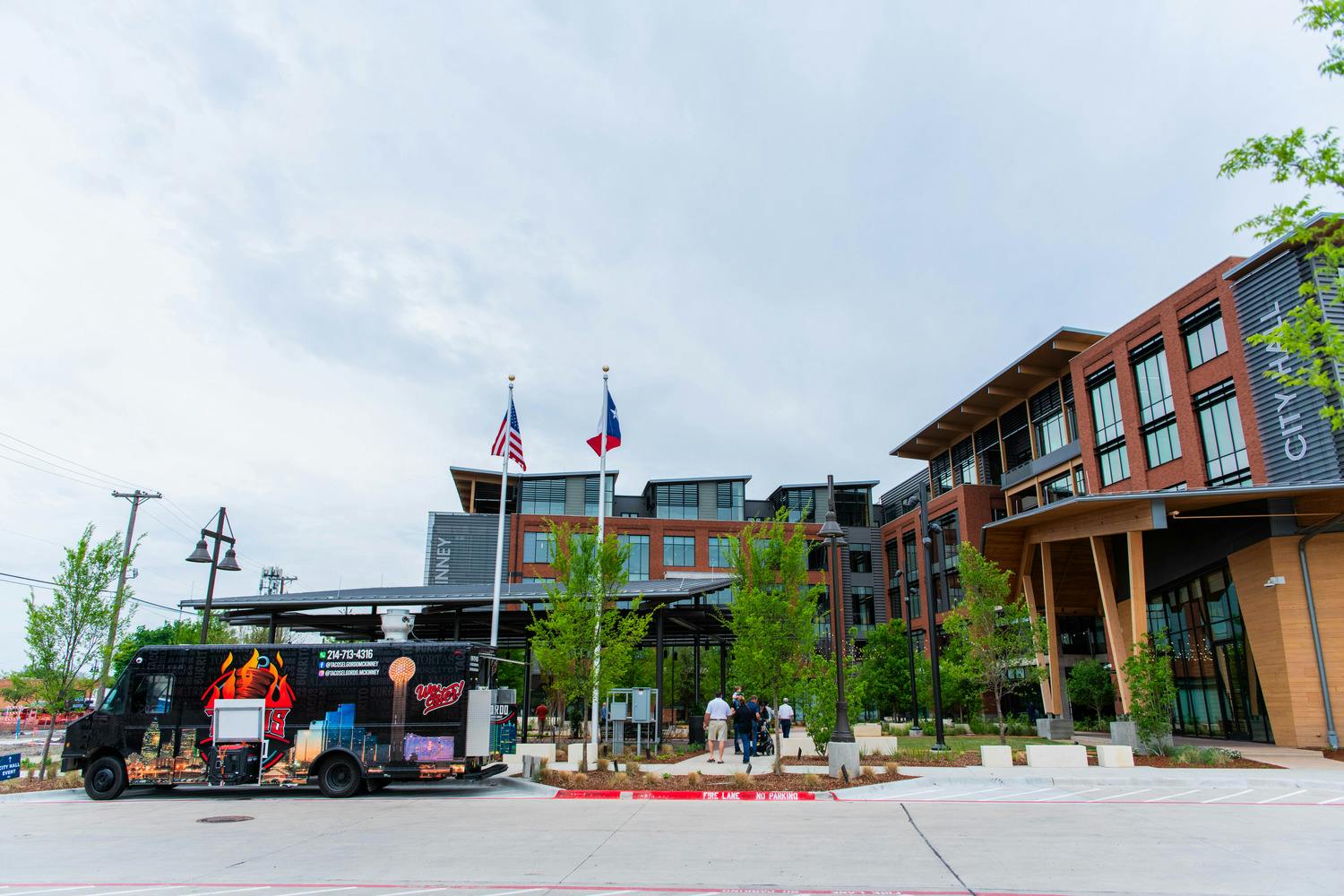Building Community Face to Interface
Category: Building Community
Written By: Nicole McBride
Date: May 14, 2020

Parkhill like many other companies has made the transition for all employees to continue their work at home.
Working from home rather than an office is new for the majority of employees at Parkhill. There is a small population who has worked remotely before the COVID-19 pandemic due to a spouse’s job opportunity or other situations. Working with team members located in offices hundreds of miles away also gave Parkhill a taste of what a WFH situation would be like, as well as what technology and work ethic would be needed to continue Building Community from home.
“As we adjusted to working remotely, I have realized that the term ‘social-distancing’ is a terrible misnomer for what we are trying to accomplish,” said Firm President Jay Edwards, PE. “The fact is that we took these profound safety measures to provide physical distance, not social distance. So, I refer to the safety measure as ‘physical distancing.’ I encourage each of you to utilize our technology to fight against ‘social-distancing’ and embrace Building Community together.”
Citrix Virtual Desktops, WebEx Teams, WebEx Meetings, Zoom Meetings, Cisco Anytime Connect, laptops and docking stations, screen share, and other apps that employees have made use of personally were utilized at Parkhill before “physical distancing.” These programs have helped the Parkhill community stay connected across office and client locations before and even more so over the last two months.
Alan Runkles, Information Systems Manager, said that all offices outside of the corporate office in Lubbock were set up with Citrix Virtual Desktop, and that made the transition relatively easy. Lubbock users were the leading office group that the IT Department had to focus on. This was a task IT had fortunately been working on before WFH orders.
Runkles said the other main challenge was supplying newer employees with the equipment they needed. This was done as quickly as possible after Edwards announced the firmwide transition to working from home. IT Help Desk Technicians have also been available for additional help with these adjustments.
“Employees are now fully versed in working from home,” Runkles said, “allowing us all to work remotely for any situation that may arise.”
Shane Danley, AIA, also had a role in this company-wide transition in his role as Design Technology Director. The Design Technology Group and IT Department worked closely to accomplish a smooth transition. For the Design Technology Group, they troubleshot home internet, helped set up new staff, and WFH training similarly to IT as well as continued their Design Technology mission.
From a personal perspective, Danley said the initial efforts of transitioning from his physical office space to WFH space did not involve anything technology-wise besides a few hours moving his monitors, docking station, and phone to his home office.
“The biggest adjustment is just learning how to work from home,” he said. “Understanding that 8 to 5 is not really the same when you work from home, or that stepping away and ‘leaving’ the office is even more critical.”
Craig Dixon, an architectural technology manager, has been working remotely for several months due to his wife’s job and a move to a new state. He said Parkhill’s technology is well-equipped for work at home, and he has taken upon the responsibility to make sure others adjust as smoothly as possible.
As a part of that passion for helping others WFH, Dixon, along with the support of the Design Technology Team, created Parkhill Lx (Learning Excellence) at the beginning of the year. Dixon said this training initiative encourages peer-to-peer learning and training, and the goal is to present “focused, consumable and practical topics” topics applicable to the architecture, civil and corporate divisions.
“In many ways, I’ve learned how to communicate with others better,” Dixon said. “We all have been forced to use the tools we have at our disposal better. We’ve been challenged to get creative and find more efficient ways to work across our new boundaries, and some of these new processes we likely could have benefited from a long time ago!
“Don’t get me wrong, meeting face-to-face is still hard to beat, but we at Parkhill didn’t work like that 100 percent of the time as it is. So, I think we’ll see a lot of benefits from having to ‘get uncomfortable’ and learn new ways to communicate and collaborate.”
Holly Holder, PE, Environmental Sector Director, said his transition to working from home was not much different than working while he is traveling. He just opens up his computer, connects to the network, and can work from practically anywhere.
Holder also said he appreciates the capabilities of Parkhill’s technologies to stay connected “face-to-face” with or without work from home orders. He said he communicates with clients as much as possible and has virtual check-ins twice a week with his Environmental Team.
“I have been asking a different person each meeting to talk about themselves, ‘Sort of a ‘Meet So-and-So,’” he said. “That has gone well. And while WFH has been a positive business experience, it can’t replace my interaction with the Parkhill family. I, for one, am looking forward to renewing those friendships. Stay safe, everyone.”
Many groups have also gathered online through virtual happy hours, coffee breaks, baby showers, and birthday parties.
Edwards said he has enjoyed figuring out ways to stay connected. At the same time, the firm is physically distant, including the 75 Moments posts on the firm’s internal social media called “RED” and connecting through video calls on WeBex. Although the annual Parkhill University event in Lubbock was canceled, Edwards led the first Virtual ParkhillU via WebEx Events.
“Getting to see people is much more effective in staying socially connected than just hearing their voice over a phone,” he said.
After this period of “pushing our employees as far as internal communication and collaboration could go,” Edwards said he believes this will change the way Parkhill works in the future.
“Those working in larger offices may now have a better understanding of the challenges of communicating remotely,” he said. “Hopefully, connections have been made that otherwise would not have been.”


